Saturday, November 30, 2024
DO YOU KNOW
Friday, November 29, 2024
TO PROTECT TREES IN WINTER
Thursday, November 28, 2024
KEEP MOVING FORWARD
Dealing with setbacks
There may be days when you feel sad of unexpected setbacks. Your marks may not be up to your expectations. Your parents may not be able to offer the support you expected from them.There are times when people disappoint you and let you down. Even your best friend might have behaved in a rude way.
But these are the times when you must remind yourself to be confident of yourself. If you believe in yourself and continue fighting for what you want, then people will understand you and they will be kind to you.
Recognise that dealing with failures and setbacks is a part of moving forward. No one wants to fail, but thinking that you will never fail is unrealistic. Take responsibility for your part in the failure so that you can learn from it.
Successful people didn’t get there automatically. They had to overcome many obstacles. They built enormous self-confidence during the days of their struggle.
● Albert Einstein could not talk before the age of four.
● Winston Churchill had to repeat a school year.
● Beethoven was scolded that he would never become a composer.
● Thomas Edison’s teacher told him: “ You are not worth enough for school education”.
● Walt Disney was fired because he wasn’t creative.
But they all made it! Think of them as being your silent mentors.
Whatever setbacks you are experiencing, whatever people say about you, keep on believing in yourself. Analyse the reasons for your set back, change your strategy and move on.
Remember the words of the famous television commentator, David Brinkley: “ A successful person is one who can lay a firm foundation with the bricks that others throw at him or her.
Wednesday, November 27, 2024
DO YOU KNOW
Tuesday, November 26, 2024
HONOURING INDIA'S FOUNDING DOCUMENT
Celebrating Constitution Day
Every year on November 26, India celebrates Constitution Day, a day that holds great significance for the nation. It marks the adoption of the Indian Constitution in 1949, a document that laid the foundation for how India functions as a democratic republic. But what exactly is a constitution, and why is it so important?
What is the Constitution and What Does It Say?The Constitution is like a rule book for the country. It outlines the basic principles and laws that govern India. It explains how our government should operate, what rights citizens have, and what duties they must fulfill. It’s a guide to ensuring fairness, equality and justice for everyone. The Constitution is also a blueprint for how the government should protect citizens’ rights while maintaining order and promoting social welfare.
The Minds Behind the Constitution: India’s Constitution didn’t just appear overnight. It was drafted by a dedicated group of leaders led by Dr. B.R. Ambedkar, one of the most influential figures in Indian history. These leaders worked tirelessly for almost three years to create a Constitution that would guarantee justice, liberty, equality and fraternity for all Indians. Their efforts were driven by a vision of a free, fair and equal society where every citizen, regardless of their background, would have rights and opportunities.
Why is Constitution Day Important?: Constitution Day is more than just a day to remember the adoption of the Constitution—it’s an opportunity for all of us to reflect on the values that keep our democracy strong. Schools and colleges across the country celebrate this day with various activities like debates, quizzes and discussions about the Constitution. Special assemblies are often held, where students and teachers talk about the importance of the day, and how the Constitution shapes our lives as citizens.This day also serves as a reminder of the struggles and sacrifices made by freedom fighters and leaders who fought for India’s independence. It’s a day to appreciate our fundamental rights, like the right to vote, the right to free speech, and the right to equality, which were won after years of struggle.
Official Declaration of the Constitution Day: Although the Constitution was adopted in 1949, it wasn’t until 2015 that the Government of India officially declared November 26 as Constitution Day. The goal? To raise awareness about the Constitution and encourage every citizen to understand their rights and responsibilities. This day is a call to action for everyone to engage with the principles that make India a vibrant democracy.
Why Should Students Care About the Constitution? As young citizens, students play a crucial role in the future of India. Learning about the Constitution helps students understand their rights, like the freedom to express opinions or the right to education, and their responsibilities, such as following the law and respecting others. By understanding these, students can grow into responsible, active participants in society, helping to strengthen the country’s democracy.
So this Constitution Day, let’s all take a moment to celebrate the document that unites us as a nation. Let’s remember the vision of our leaders, embrace our rights, and commit to fulfilling our responsibilities with pride. Together, we can uphold the values that make India a strong, fair, and democratic country!
Monday, November 25, 2024
AN ANECDOTE FROM THE LIFE OF ABDUL KALAM
Sunday, November 24, 2024
THE NORTHERN LIGHTS
Saturday, November 23, 2024
WISE ADVICE
Friday, November 22, 2024
THE WEB MASTERS
Thursday, November 21, 2024
DO YOU KNOW
Wednesday, November 20, 2024
COLLECTION OF STORIES IN BUDDHIST LITERATURE
Tuesday, November 19, 2024
BELIEVE IT OR NOT
A Place on Earth Where It Rains Fish!

Imagine looking up at the sky, waiting for rain, but instead of water droplets, you see fish falling! Sounds strange, right? Well, it may sound like something out of a storybook, but it’s actually real. There are places on Earth where it quite literally rains fish. One of the most famous places where this happens is a small town in Honduras called Yoro. There have also been fishy rains in other parts of the world, like Lajamanu in Australia. But how does this happen, and why?

In this blog post, we’re going to dive deep into this fascinating phenomenon and find out the science behind why fish fall from the sky.
Where Does It Rain Fish?
Yoro, Honduras: Home of the “Lluvia de Peces”
The small town of Yoro in Honduras is one of the most well-known places where it rains fish. Locals call it Lluvia de Peces, which literally means “rain of fish” in Spanish. According to the people of Yoro, this bizarre event happens at least once or twice a year, usually between May and July. It occurs after a heavy thunderstorm, with dark clouds and strong winds, and soon enough, fish are found scattered all over the ground.
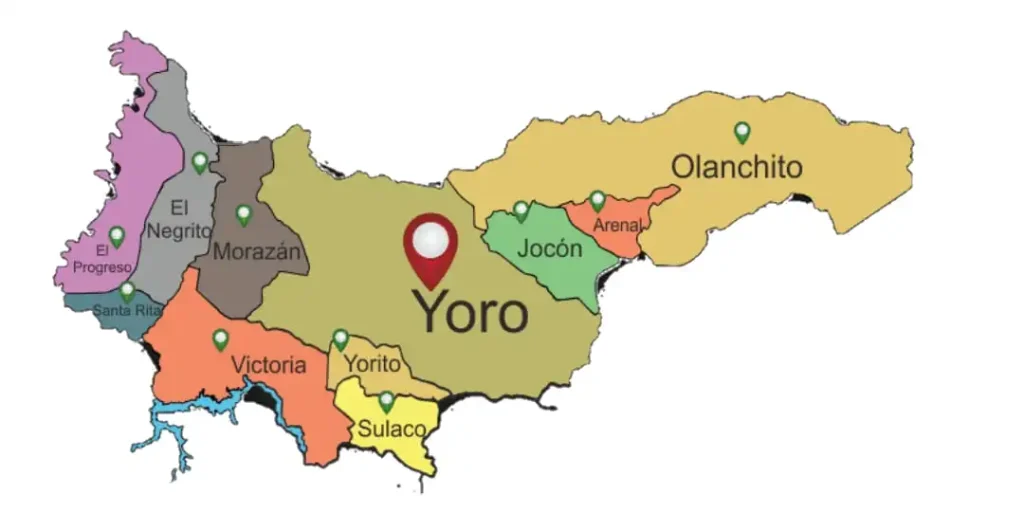
The locals believe this is a miracle, and there is even a legend that says a Spanish missionary, Father José Manuel Subirana, prayed for the people to have food, and ever since, the fish have been raining from the sky. But is it really a miracle? Or is there a scientific explanation behind this fishy rain?
Lajamanu, Australia: Fish Falling in the Outback
Another place that experiences this unusual phenomenon is a remote town in Australia called Lajamanu. Back in 2010, the people of Lajamanu witnessed fish falling from the sky not once, but twice in the same week! This town is in the Northern Territory, in the middle of the Australian outback. So how did fish end up raining there?

The fish were identified as spangled perch, which are common in rivers and lakes across Australia. However, Lajamanu is hundreds of miles away from the nearest river. So, what caused this strange event? Let’s explore the science behind it.
The Science Behind Raining Fish
You may wonder, how is it even possible for fish to fall from the sky? Well, while it may seem magical, there’s a scientific explanation that can help us understand this mystery.

Water Spouts and Tornadoes
The most common scientific theory behind raining fish is that strong winds, such as waterspouts or tornadoes, are responsible for picking up fish from rivers or lakes and carrying them up into the sky. A waterspout is like a tornado that forms over a body of water. It has a powerful funnel of wind that can suck up water – and anything in it, including fish.

Once the fish are lifted high into the clouds by these winds, they can be carried for several miles. Eventually, when the storm loses its strength or the wind can no longer carry the fish, they fall back to the ground, creating what looks like a rain of fish!

Storms and Weather Conditions
In places like Yoro, the rainy season often brings intense thunderstorms. These storms, combined with powerful winds, can lift the fish out of the nearby rivers. It’s thought that the fish come from the Aguán River, which is located some distance from Yoro. When the winds are strong enough, they can carry the fish all the way to the town, where they eventually drop to the ground.
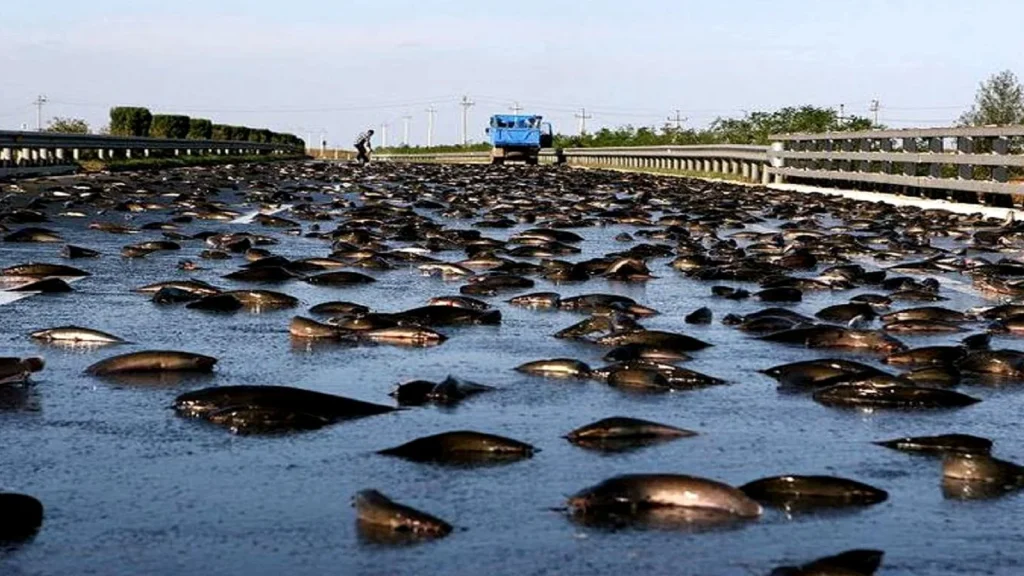
In Lajamanu, it’s likely that strong updrafts during the thunderstorms lifted the fish from a distant body of water and dropped them over the town. The spangled perch that fell are known to be hardy fish that can survive being out of water for a while, which explains why many of the fish were still alive when they hit the ground.
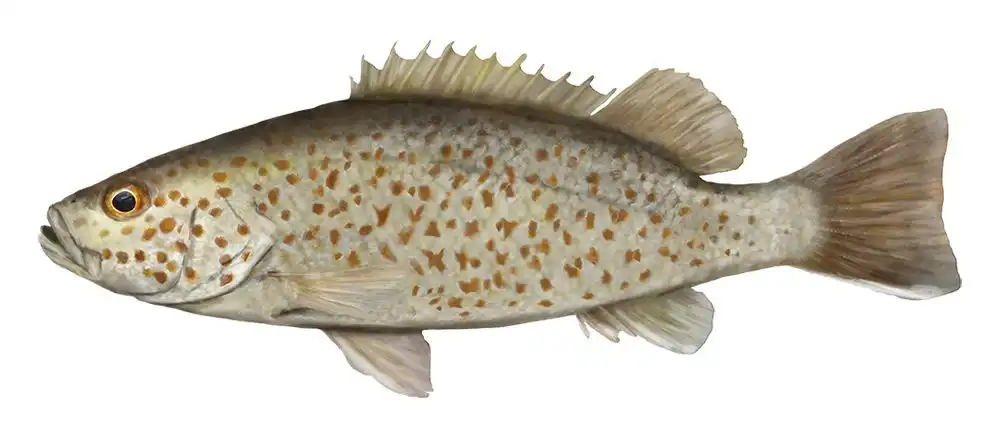
Fishy Rains Around the World
Honduras and Australia aren’t the only places where it has rained fish. There have been similar reports of fish falling from the sky in other parts of the world, including:
- India: In 2008, people in the Kerala region witnessed fish raining down during a monsoon.
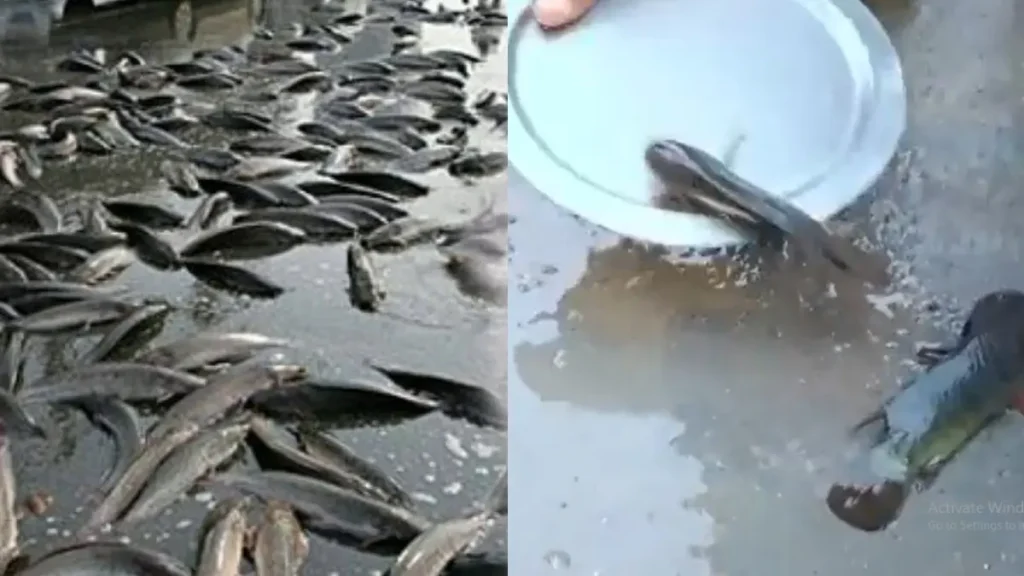
- Iran: In 2023, a video went viral showing fish falling in a village after a rainstorm.

- The United States: In 1947, in Louisiana, there was an event where fish rained down after a storm, causing quite a commotion!
These instances all have similar explanations—strong winds and storms carrying the fish from water sources and dropping them elsewhere. Although it’s rare, these events have been happening for many years and have been documented across the globe.
Is It Dangerous?
You might wonder if raining fish could be dangerous. After all, it’s not every day that fish fall from the sky! Fortunately, these events aren’t usually harmful to people, as the fish are typically small and light. However, it can be surprising for those who aren’t expecting it, and it can cause a bit of a mess with fish flopping around everywhere!
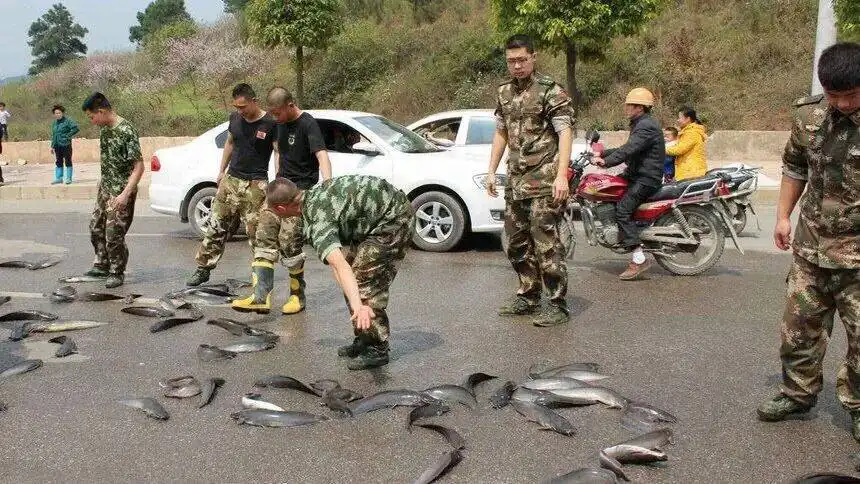
Why Do People Celebrate It?
In some places, raining fish is seen as a blessing. In Yoro, Honduras, people celebrate the Lluvia de Peces with a festival. They believe it’s a miracle and a gift of food from the heavens. After the fish fall, the locals collect them and cook them, sharing the meal with their community. For the people of Yoro, it’s more than just a strange weather event—it’s a sign of hope and abundance.

Can Other Things Rain from the Sky?
Believe it or not, fish aren’t the only things that have been reported to fall from the sky. Other animals, like frogs and birds, have also rained down in various places around the world. The same principle applies: powerful winds or storms lift these creatures into the air and drop them in places far from where they originally lived.
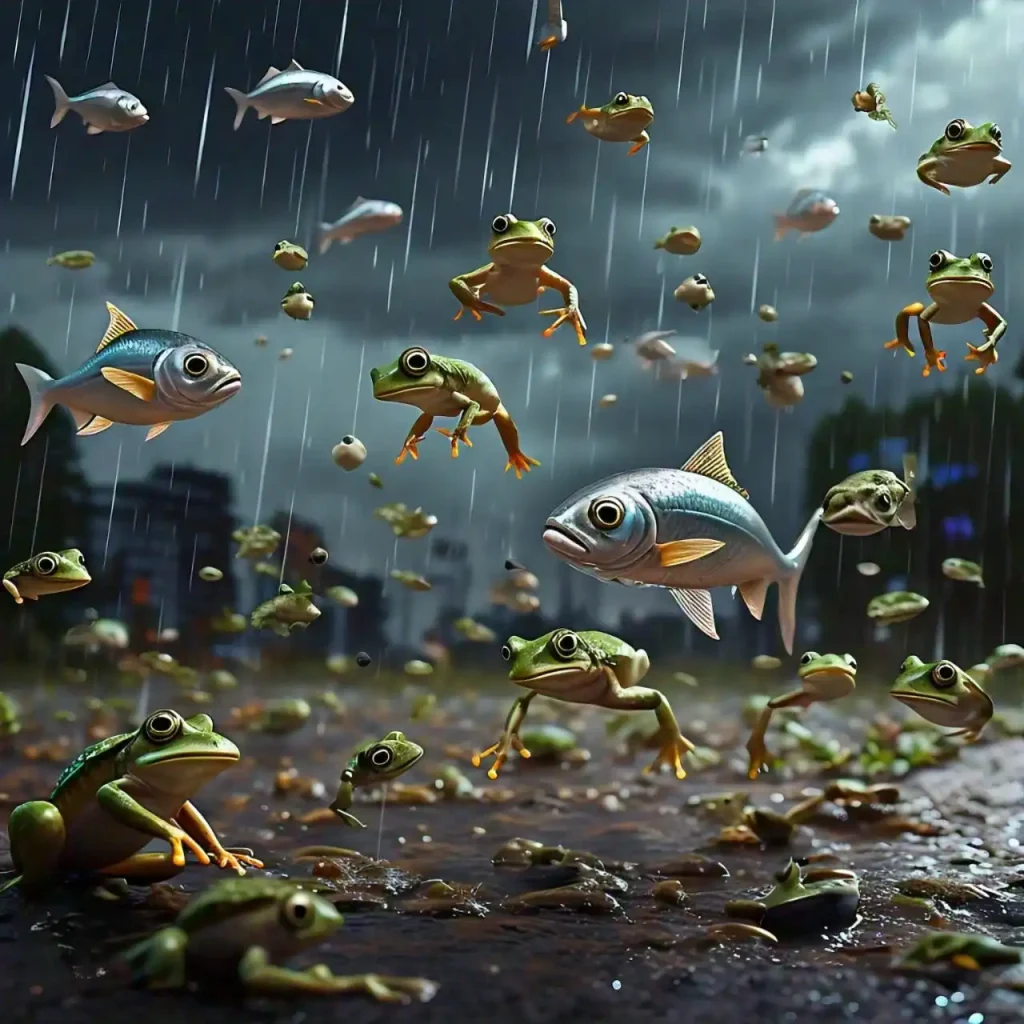
In 1873, a report from Kansas, USA, said that frogs rained down during a storm, and there have been other accounts of frogs falling in Serbia, Japan, and the UK. Like fish, these animals are caught up in strong winds and carried far away from their natural habitats.
Conclusion: While the idea of raining fish might seem unbelievable at first, it’s actually a rare but real event. Thanks to the power of nature, storms, waterspouts, and strong winds can lift fish out of rivers and lakes and carry them high into the sky, only to drop them down miles away from their homes.
Monday, November 18, 2024
HEALING THOUGH SOUND
Sunday, November 17, 2024
TECHNOLOGY USED FOR FACE RECOGNITION
Saturday, November 16, 2024
AQUATIC ENGINEERING
Lessons from fish
Fish are incredible swimmers. They’ve been perfecting their moves for millions of years, and each species has unique adaptations that help it glide through the water effortlessly. Scientists noticed that the shape of a fish's body plays a huge role in how it moves. Some fish have sleek, streamlined bodies, perfect for speed, while others have broader bodies for stability and maneuverability.
Take the tuna, for example. Tuna-fish are built for speed, with a streamlined, torpedo-shaped body that cuts through water with minimal resistance. By designing boat hulls that mimic this shape, engineers create boats that can move faster and use less fuel.
Dolphins, although not fish, are also inspiring. Their smooth, curved bodies and flexible spines allow them to leap and swim with grace and speed. Boats designed with dolphin-like curves can glide over waves more smoothly, making for a faster and more comfortable ride.
Engineers are constantly experimenting with new designs, taking inspiration from various sea creatures. Imagine a submarine that moves like a squid or a speedboat that mimics the agile movements of a marlin. The possibilities are endless and exciting!
So, why is this important? By designing boats that move more efficiently through the water, we can save fuel, reduce pollution, and explore our oceans more effectively. Plus, it’s a great example of how we can learn from nature to make our world better.
Next time you’re by the water, take a moment to watch the fish. Think about how they move and what makes them special. Who knows? You might come up with the next big idea for boat design!
Remember, the world is full of amazing connections just waiting to be discovered.
Friday, November 15, 2024
PERSONALITY DEVELOPMENT
The Fluffy Sweet That Melts in the Mouth
COTTON CANDY Cotton candy is one of the most delightful and eye-catching sweets in the world. Light as a cloud and sweet as a dream, this c...

-
ANNABELLE The real Annabelle doll is a well-known case of alleged paranormal activity, made famous by Ed and Lorraine Warren, two well-know...
-
WHY IS SUGAR WATER STICKY? Sugar water is sticky because sugar molecules have a strong affinity for water molecules, forming hydrogen bonds ...
-
A MAN AND THE BLIND BOY A blind boy sat on the steps of a building with a hat by his feet. He held up a sign which said, "I am blind. ...


















